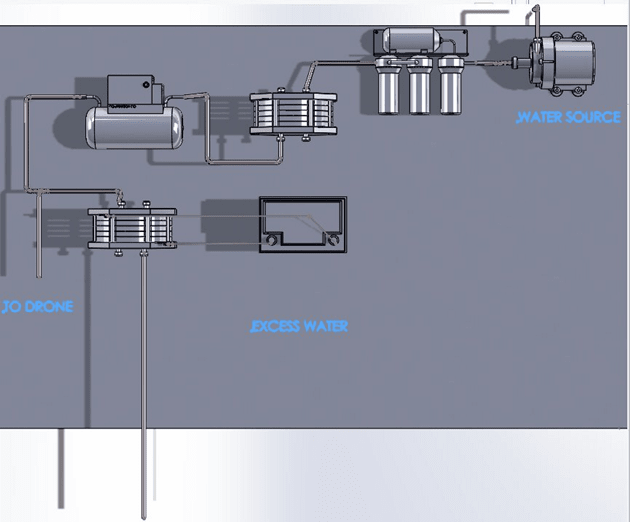CONTRIBUTE TO NASA'S FLIGHT RESEARCH GOALS
We are Purdue student researchers working under the mentorship of Professor Qiao in the School of Aeronautics and Astronautics. Recently, we entered the University Student Research Challenge (USRC), hosted by NASA, and won top prize!
Now we are looking to put our ideas into practice, but we can't do it without your help.
 |  |  |
WHY DO WE NEED YOUR SUPPORT?
As part of the USRC competition, we've won some support from NASA’s outreach program. To show NASA we have the skills to promote awareness our student research to the general public, the competition requires us to raise $2,000 on our own through crowdfunding. This is where you come in! Will you help us reach our fundraising goal so we can meet NASA's requirements?
Our project was first established in the summer of 2023. As a group, we decided to investigate the possibility of developing a system that generates hydrogen from ocean water to power long-term data collection drones. The idea involves establishing an ocean-based fueling station that utilizes electrolysis, a process that produces hydrogen fuel from water. This hydrogen will be used to power four small fuel cell drones designed for remote sensing and climate monitoring over the ocean.
With the re-fueling capability, these drones will have significantly extended flight durations (forever) and require minimal maintenance, which ensures 24/7 aerial coverage. These drones would be placed in difficult-to-access areas of the ocean and open exciting possibilities for gathering real-time climate data, conducting comprehensive surveys of marine life and oceanic glaciers using advanced cameras and sensors.
We intend to use the donations received will help start a proof-of-concept setup for the idea. We plan to use any support we can raise to finalize the design, build, and assemble a protype of this project. In the year that we have to build our proof-of-concept, we will concentrate on the basic premise of the project rather than any of the individual elements. Our final delivery for this project will be narrowed down to a stationary raft capable of producing and transferring hydrogen aboard the drone, as compared to a mobile refueling station capable of flight. We will also be working in less saline environments, as a filtering system for this design will require a much larger budget and technology. As such, the final idea is to create a raft capable of pumping and filtrating water before processing it into hydrogen and transferring it aboard the drone, while the drone should only be able to sustain flight and refuel from the station.







